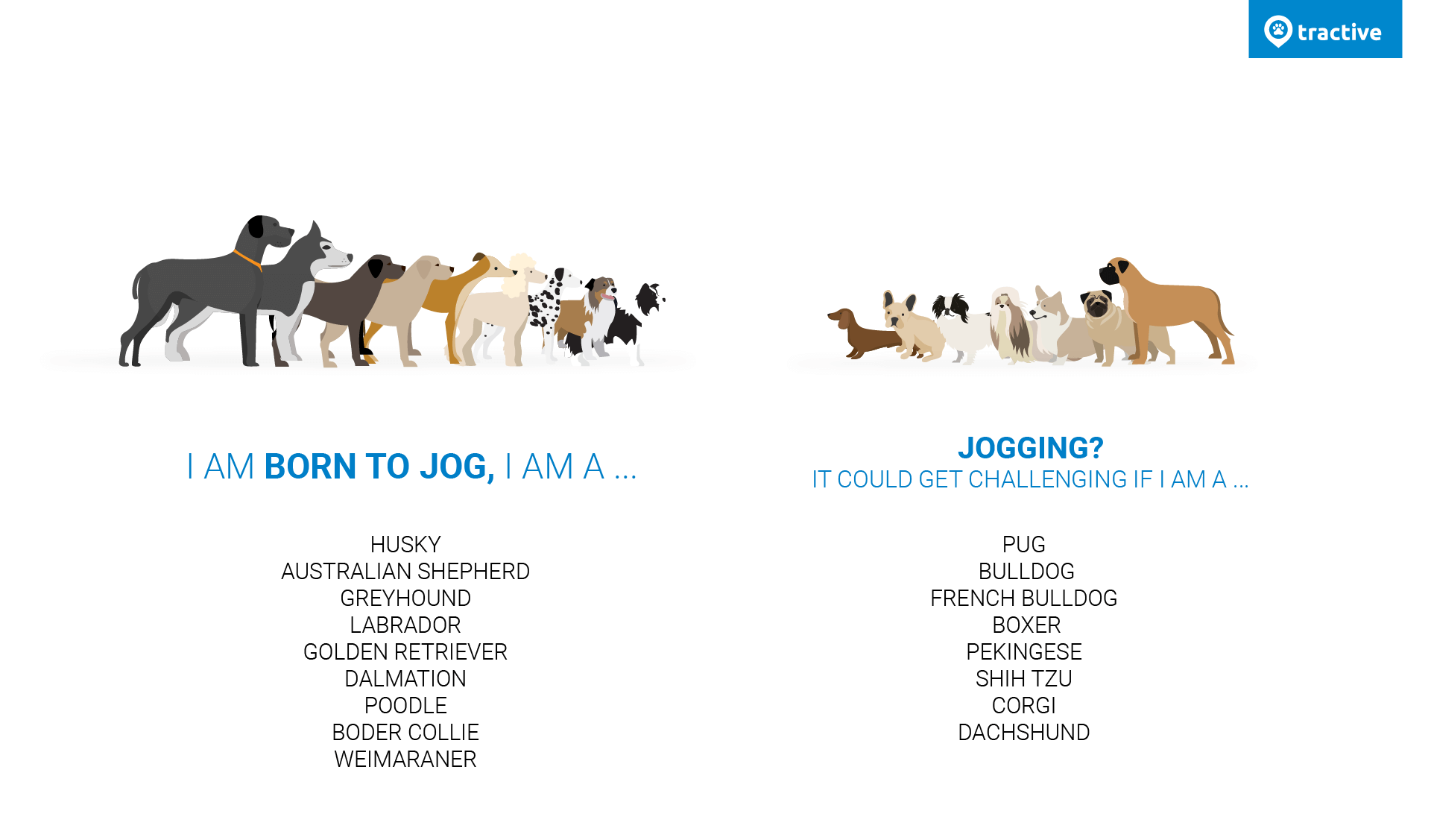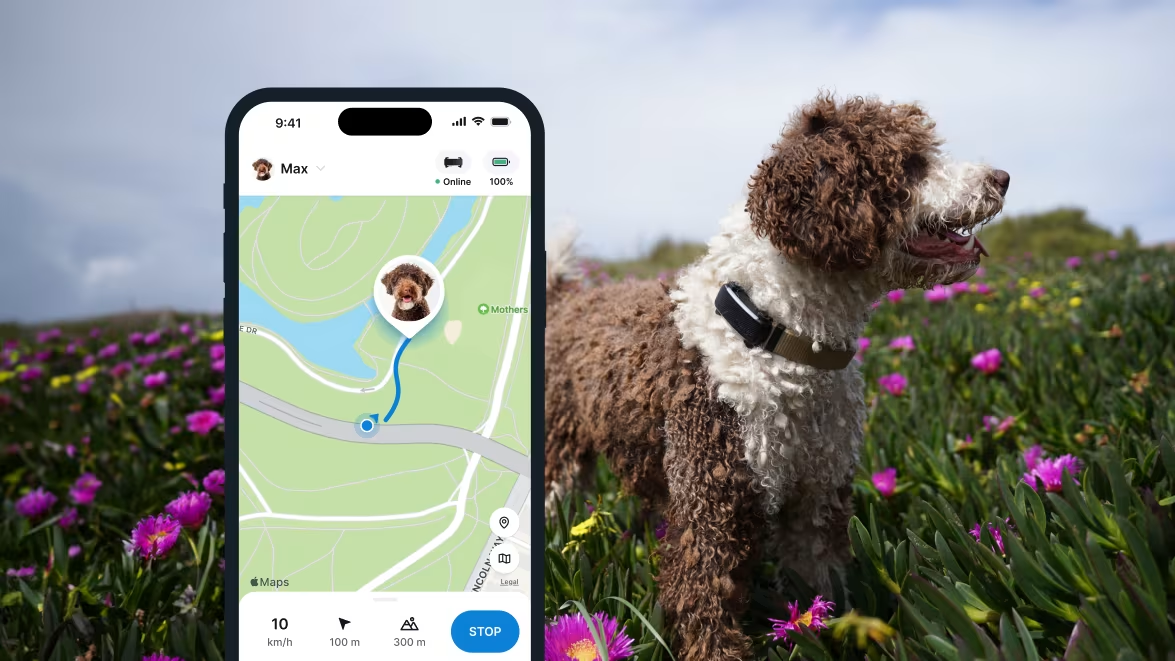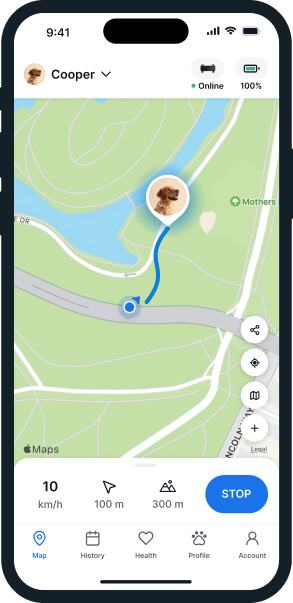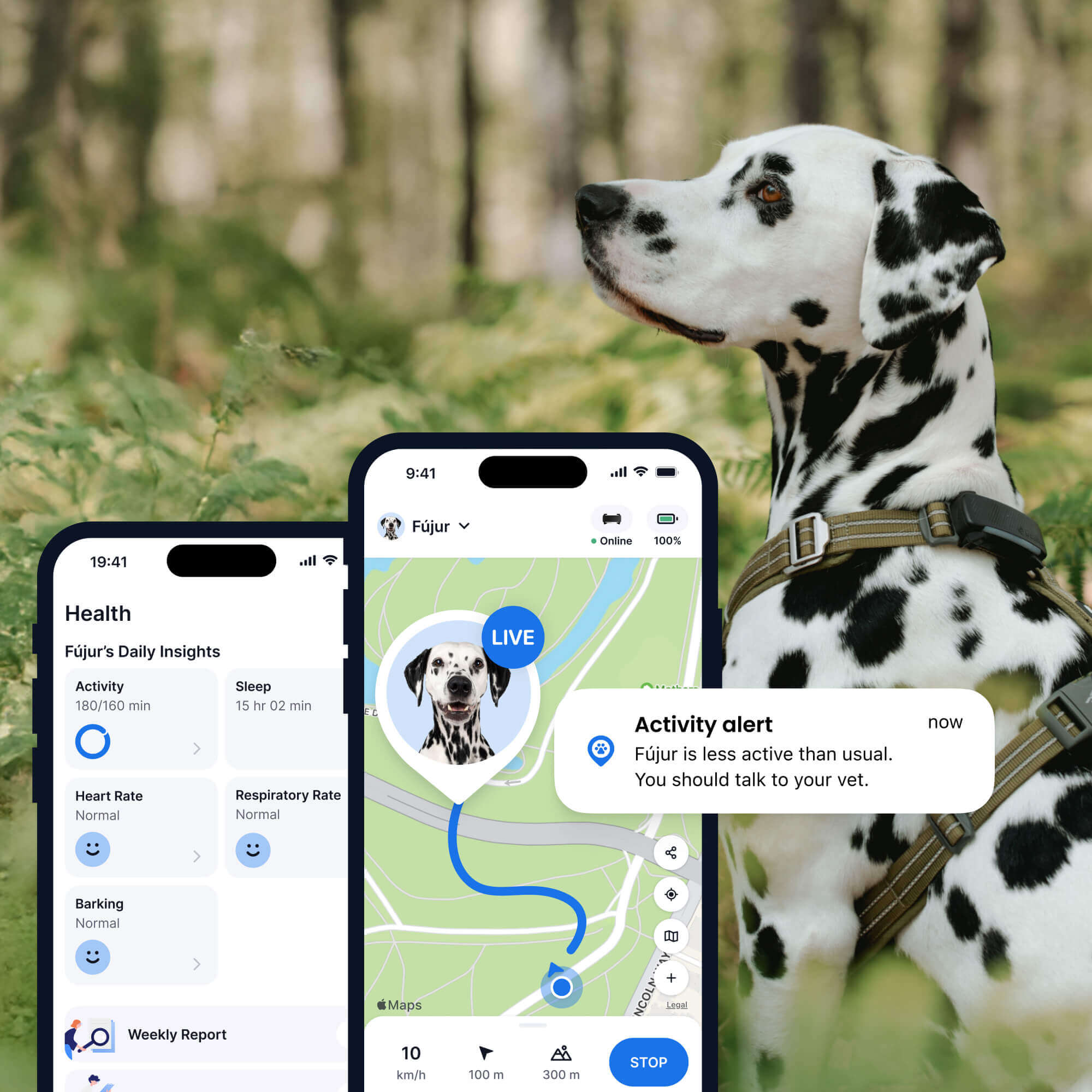The Best Running Dogs For Your Next Jog Outdoors
Dogs can make the best running companions. But are all dogs suited to running? (Hint: nope.) Discover which breeds make the best running dogs - and how you can keep them safe and healthy.
Just started a new running routine or want a little company on the trails? Here are the best running dogs that are natural-born athletes and always ready to go – plus how you can ensure they don’t decide to outrun you into the distance the next time you’re out together.
Key Takeaways
Not all dogs are built for running. Dogs that are great running partners are usually big breeds with long legs, like Huskies or Labradors. Breeds with “smushed” faces, like Pugs, might have trouble breathing and shouldn’t run long distances.
Before you start running with your dog, make sure they have a good temperament and are well-trained. A good running buddy should be able to listen to commands and not get too distracted by things like squirrels or other dogs.
For your dog’s safety, a Tractive smart dog tracker can give you peace of mind. It can help you keep track of your dog in real-time if they ever get lost or wander off. Plus, you can also see how much distance your dog has covered and how many calories they’ve burned.

Always know your buddy is healthy & safe
Read moreBest running dogs by breed
In general, large breeds with long legs make the best running dogs. But you do have some smaller exceptions, like Jack Russells, who are just packed with energy and make for excellent running partners too. Medium-sized dogs like Vizslas and Rhodesian Ridgebacks, for example, have lean, muscular bodies that are well-suited for running and keeping up with you. Considering their size, bone structure, and overall physical disposition, here are a couple of dog breeds that make the best dogs to run with:
- Huskies
- Beagles
- Australian Shepherds (or even Shepherd mixes)
- Greyhounds
- Malamutes (especially if you live somewhere cold!)
- Labradors
- Setters
- Golden Retrievers
- Pointers
- Dalmatians
- Poodles
- Borzois (especially if you prefer sprinting)
- Border Collies
- Samoyeds (especially for long distances)
- Weimaraners
- Whippets
If you have one of these dog breeds, grab your shoes – its most likely safe to go running with your dog. Just keep in mind that many of these high-energy dog breeds have a high prey drive and curious, friendly temperaments. Some (like Jack Russells) also bore easily. Which means they’re also likely to run away from you while out on a run.
💡A smart dog tracker with real-time GPS tracking can be a potential lifesaver if you have a flighty, high-energy running dog as your workout buddy. With just a glance at your phone, you can track their movements in real-time – no matter where they’ve disappeared to – and find them right away.

Follow your dog anywhere
Get real-time location information, wherever they go. And find out when they try to make an escape, or just when they go somewhere they shouldn’t, with Virtual Fences.
These dog breeds don’t make good runners
On the other hand, dogs with shorter legs and a smaller nose are not well suited to running or jogging. Due to their “smushed” face, they will experience problems breathing while running. Among those are:
- Pugs
- Bulldogs
- French Bulldogs
- Boxers
- Pekingese
- Shih Tzus
- Corgi
- Dachshund
If you have one of these breeds, accept the fact that your dog may not be a runner. Instead, try walking, jogging, or slunning – aka slow running – at a speed and distance that is comfortable for you both. Or try some fun indoor games, like tug of war or hide and seek, to get them excited.

What makes a dog one of the best running dogs?
Not all dogs are natural runners, but some characteristics make certain breeds better suited for the activity. A good running dog is one that has the right combination of stamina, temperament, and physical structure. Here are a couple of key traits that contribute to a great running companion, along with examples of breeds that excel in each category.
- Stamina & endurance.
Some dogs are built for long, steady runs over miles of trails or roads. These breeds have excellent cardiovascular endurance and can keep up for long distances. For these the best running dog breeds, include Weimaraners, Siberian Huskies, Border Collies, Australian Shepherds. - Speed & agility.
If you prefer shorter, high-speed runs (like sprints), choose a breed that is quick, agile, and powerful. Dogs breeds like Greyhounds, Whippets, Vizslas, and Jack Russell Terriers keep up at high speeds but may not have the endurance for long distances. - Temperament & trainability.
Some dogs are naturally obedient, focused, and eager to please, making them great off-leash running partners. They respond well to commands and have a strong recall. Some examples include Labrador Retrievers, Golden Retrievers, German Shorthaired Pointers, and Standard Poodles. - Low prey drive & impulse control.
Dogs with a low prey drive are less likely to get distracted by squirrels, rabbits, or other runners. This makes them easier to control, especially if running in parks or open areas. Like, for example, Bernese Mountain Dogs, Great Danes, and Newfoundland dogs.
- Cold tolerance.
Some dogs thrive in colder temperatures and have thick coats that protect them from the elements. If you love running in winter, these breeds will enjoy it too! In these cases, go for Alaskan Malamutes, Siberian Huskies, Samoyeds, or a Bernese Mountain Dog. - Heat tolerance.
Dogs with short coats and lean builds handle warm temperatures better than thick-coated breeds. If you live in a hot climate, choose a breed that can regulate heat efficiently, like Dalmatians, Rhodesian Ridgebacks, Dobermans, or Basenjis.
Joint health & structure.
Some breeds are more prone to joint problems (e.g., hip dysplasia), which can make running painful. Breeds with a balanced build and strong joint health make better running partners. Like, for example, Border Collies, Australian Cattle Dogs, German Shepherds (from working lines), and Belgian Malinois.
What to consider before running – besides your dog’s breed
No matter your dog’s breed, there’s no substitute for consistent training and proper safety measures before running together. Whether you’re planning to run with your dog on-leash or off-leash, their level of obedience and how much you trust them to stay by your side matters just as much as their physical ability. So before you two head outdoors, ask yourself:
How well-trained is my dog?
Regardless of breed, size, or energy level, your dog’s training and obedience can make or break the experience when you’re out running together. Consider their:
- Leash manners
Does your dog pull excessively or get easily distracted? Training them to walk politely on a leash is essential before introducing running. - Recall
If you plan to run off-leash, your dog must have a solid recall and come back to you immediately, even in the presence of distractions. - Impulse control
Some dogs get overly excited while running and may suddenly lunge toward people, other dogs, or wildlife. - Prey drive
Certain breeds and individual dogs have a stronger instinct to chase fast-moving objects, including squirrels, rabbits, or even cyclists and runners. If your dog has a high prey drive, running off-leash may not be safe unless they have been trained to resist the urge to chase. - Reproductive status
A dog that’s intact (meaning not spayed or neutered) might be more likely to run off-trail because they’ve sniffed out a female in heat or a male in the vicinity.
Read more: Running With Dogs? Tips To Keep It Safe & Sporty
What are the local laws concerning running with dogs?
First, check the leash laws. Some areas require dogs to be leashed at all times, including (and especially!) on running or hiking trails.
Next, consider that not all trails allow dogs. You’re best off looking up some dog-friendly backpacking, hiking, or running trails that allow pets. Be aware of wildlife protection laws. Some places prohibit dogs from running in nature reserves or certain trails.
Finally, is your dog microchipped? Depending on where you are in the world, your dog might require a microchip to identify them in case they get lost. It’s an essential safety measure we’d recommend you take, no matter what. (Plus, a collar with an ID tag including your contact details.)
Am I prepared to carry all this running gear?
And more importantly, is your dog comfortable with it? Regardless of their training level, having the right gear can make running safer and more comfortable. Like, for example, with a:
- Hands-free leash or running belt
Which can keep your hands free while maintaining control. - Dog harness
Which can reduce strain on your dog’s neck and gives better control than a collar. - Reflective gear & LED lights
If you two are running at night, these are essential for visibility and preventing any accidents. - Collapsible water bowl & water bottle
Especially if you’re running on a warm day. These keep your dog hydrated, especially in warm weather. - Waste bags
To clean up after your dog, even on trails.
So no matter which running dog you pick as company for your next workout, you’ll always have the peace of mind you can find them – no matter how far they scamper off.
Where a smart dog tracker can help
So you’ve found the perfect running buddy in a high-energy dog breed, but what happens if a squirrel or a particularly interesting scent sends them off-course? For runners, having a dog that’s a natural athlete is great, but it can also mean they’re prone to sudden dashes. That’s where a Tractive smart dog tracker comes in as a key part of your safety gear.

Strapped to your dog’s harness or collar, you can now:
Always know where they are
No matter how well-trained your dog is, an unexpected distraction can send them on an unplanned adventure. With Tractive’s real-time GPS tracking, you can see your dog’s exact location on your phone at all times. This is especially crucial if you’re running in a new area, on a trail with lots of turns, or in a busy part of town. If they slip their leash or a loud noise spooks them, you’ll know exactly where they are and can go get them in a flash.
Spot trouble before it’s too late
Beyond just location, the Tractive tracker can act as an early warning system for your running partner’s health. It firstly helps you figure out how much distance your dog has covered, plus how many calories they’ve burned. You can also monitor their activity levels and sleep patterns, which helps you get a sense of what’s normal for them. The Health Alerts feature will notify you of any significant changes. For example, if your dog is suddenly less active or sleeping more than usual after a long run, it could be a sign of overexertion, joint pain, or other issues. You can also keep an eye on their vital signs, such as heart and respiratory rate, which can provide valuable data to share with your vet, helping you prevent a minor issue from becoming a major one.
Remember: Breed isn’t everything!
Even if a breed is known for being a good runner, individual dogs vary in their ability, personality, and health. A well-trained, properly conditioned dog of any breed can become a great running partner with time and practice. The best running dog is the one that’s trained, prepared, and enjoys running just as much as you do! 🏃♀️🐕
And if you’ve liked this post, share it with a friend or a loved one – and let’s help build a safer, kinder world for our furry friends together.





